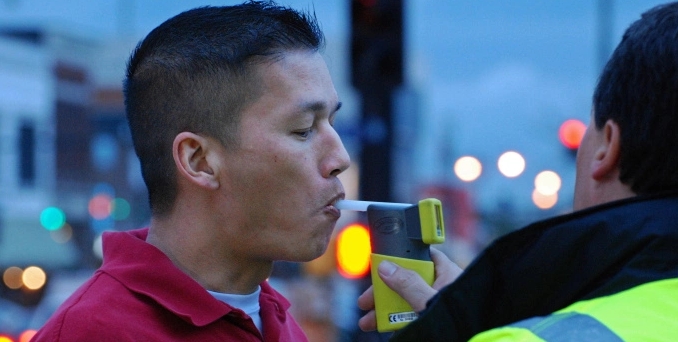
FAKE SCKENCE FOR COPS: ALCOHOL LEVEL BREATHALYZERS BASED ON SHAM SCIENCE, SHOCKING INVESTIGATION DISCOVERS
Vicki Batts

Breathalyzer test results have long been considered a lynch pin of the criminal justice system. About a million people are arrested every year for drunk driving in the United States — but a shocking investigation has revealed that many of these arrests were likely made in vain. As it turns out, breathalyzer testing is based on sham science, and most often, the results they produce are inaccurate. These devices can be found at just about every police station in the United States, and are commonly used during road-side traffic stops.
The way a breathalyzer works seems pretty simple: After you get pulled over, police will ask you to blow into the device. If the devices registers your alcohol levels as 0.08 or above, you’re probably going to jail. But as a special investigation by The New York Times reveals, nothing is ever as simple (or accurate) as it seems.
Breathalyzers are a scam
According to the Times, breathalyzers produce skewed results with “alarming frequency.” While these devices are marketed as being accurate to the third decimal point, many thousands of test results have been thrown out of court, largely due to human error and poor government oversight. In Massachusetts and New Jersey, judges have thrown out over 30,000 breathalyzer tests over the course of just the last year.
Breathalyzers are extremely sensitive devices. If they haven’t been calibrated properly, big trouble can follow. The Times reports that in instances where a breathalyzer isn’t calibrated correctly, the results may be up to 40 percent higher than they should be.
This means that quite a lot of people have probably gotten arrested or fined for no reason.
Add this to the fact that most police departments are in charge of maintaining their machines — and that most lack the expertise and high standards necessary to keep these devices accurate — and you’ve got a recipe for disaster.
Lab techs from some cities even use “homemade” chemical solutions, which further skew breathalyzer test results. Some police stations will actually disable features that are meant to ensure the device’s accuracy. States have chosen breathalyzers that their own experts cautioned against. Tech experts also say that many of these devices have grievous problems with their software.
And after all the human error is set aside, there is still the ridiculous fact that breathalyzers proclaim to provide an accurate assessment of blood alcohol content based on your breath. You cannot accurately measure blood alcohol levels without a blood test. It’s common sense, and yet, for some reason, civilians continue to be persecuted thanks to corrupt police tactics.
Enter the police state
The Times reportedly interviewed over a hundred scientists, lawyers, executives and police officers. Thousands of court filings, corporate records, confidential emails and other documents were reviewed. And together, they paint a very disturbing picture.
A Pennsylvania county judge said that it was “extremely questionable” whether or not any of the breathalyzer results from his state could stand up to real scrutiny. In Florida, officials described their state’s chosen device as a “magic black box” with “significant anomalies.”
And yet, in spite of the various and numerous complaints with these devices, breathalyzers continue to be used by police at a national level. The test results from these devices are used in our court systems as undeniable proof of guilt and drunkenness.
Industry veteran John Fusco, who ran the breathalyzer manufacturing company National Patent Analytical Systems, told the Times, “The tests were never meant to be used that way.”
While drunk driving is obviously a serious issue, and drunk drivers should be arrested, breathalyzer tests cannot be the only source of proof that puts people in jail. Police are using these devices incorrectly, sometimes intentionally, and at that point, breathalyzers become more of a nuisance than a savior.
See more stories of corruption at Corruption.news.
Sources for this article include:
